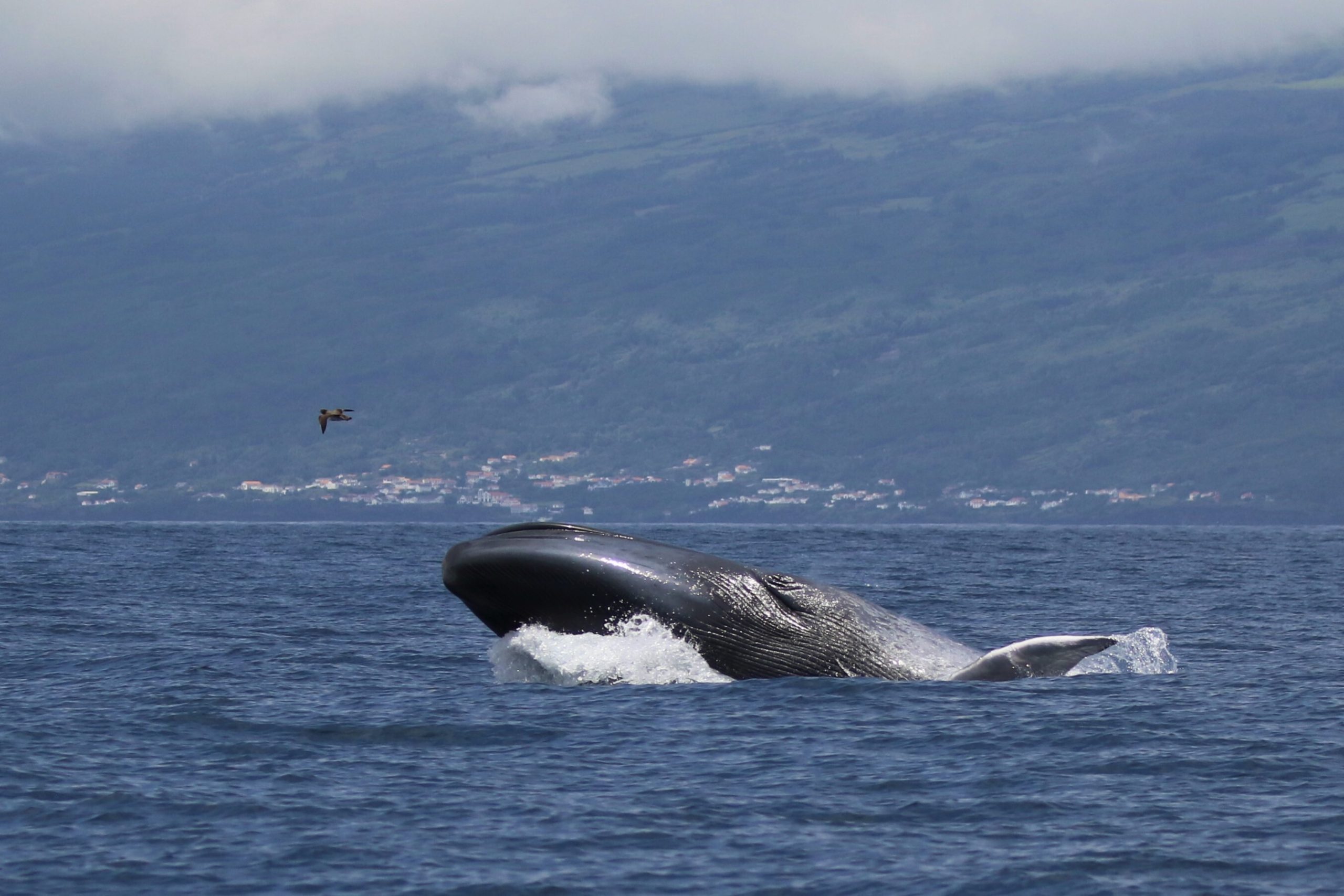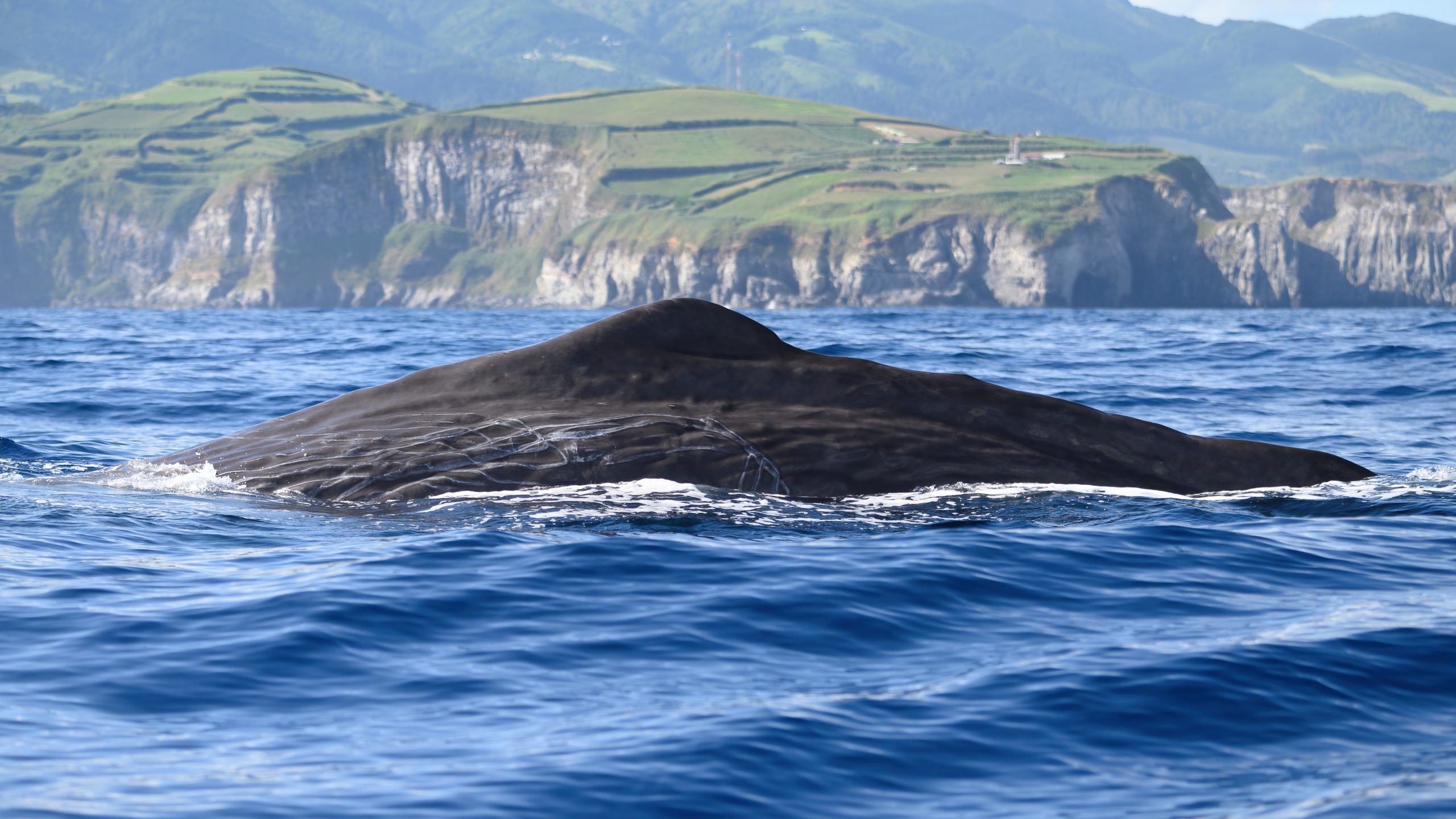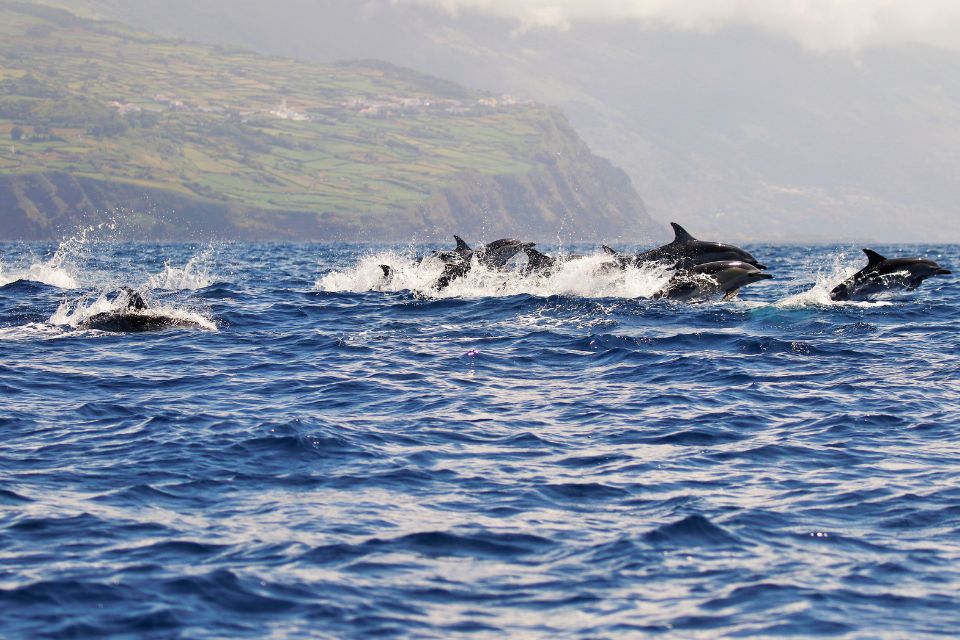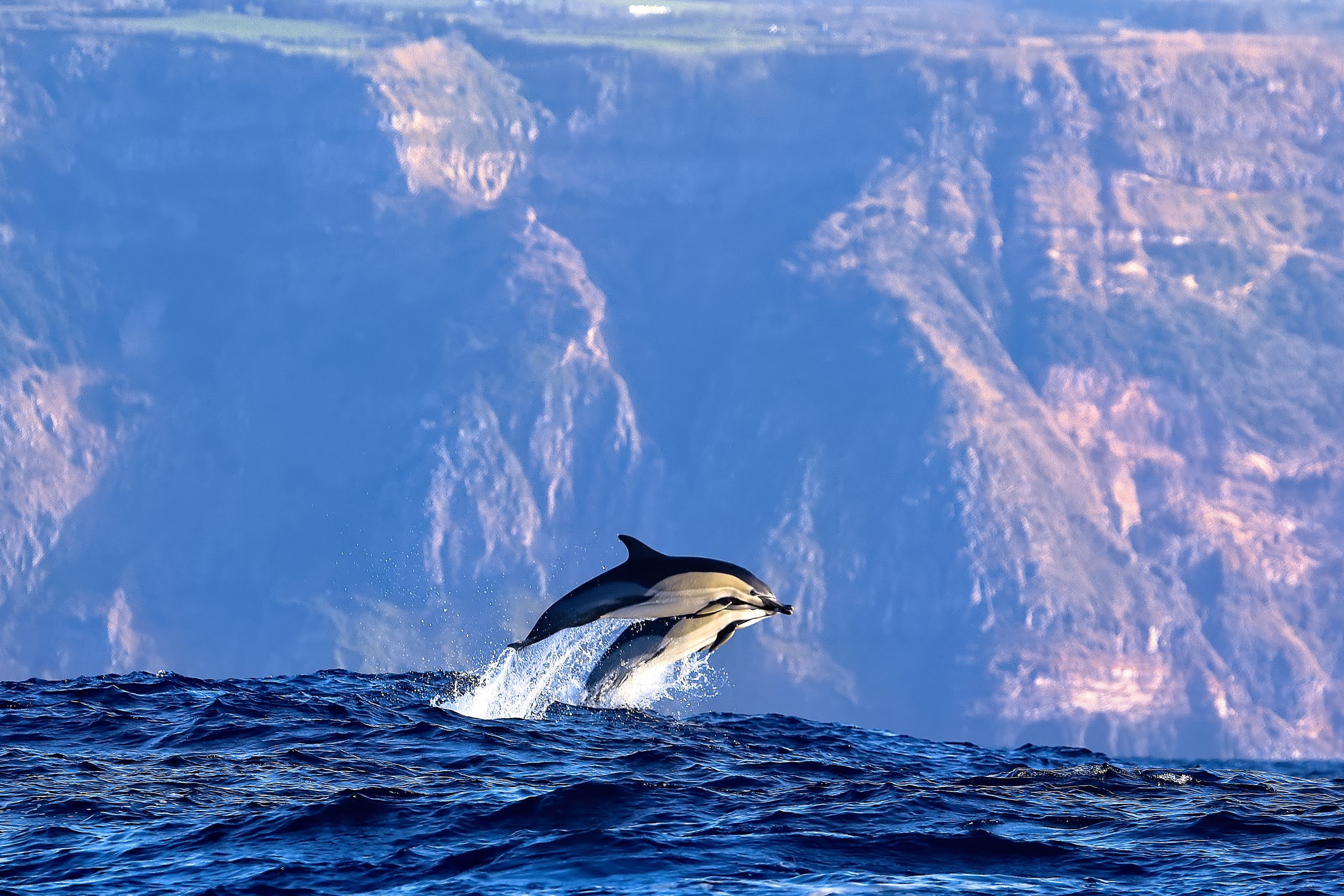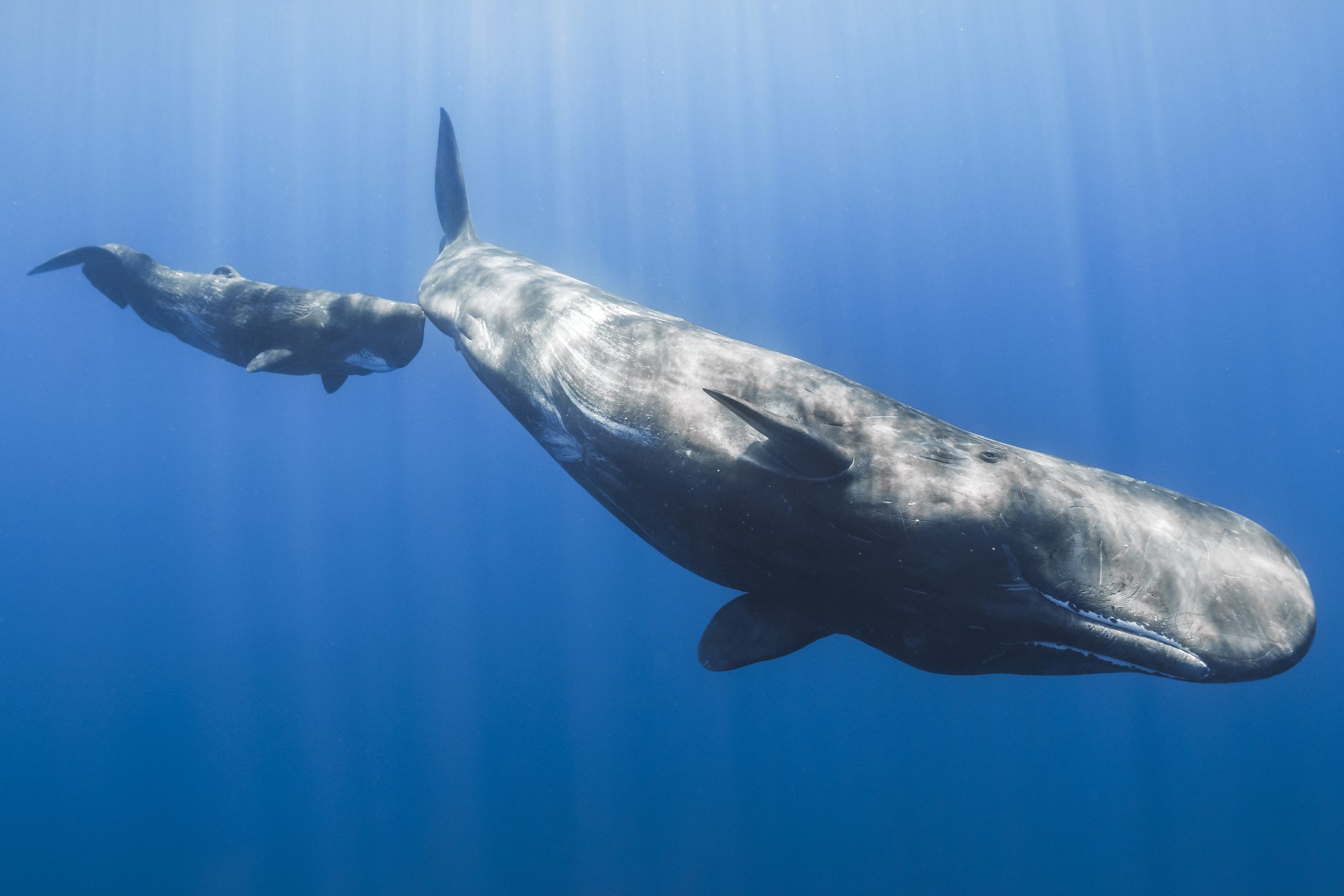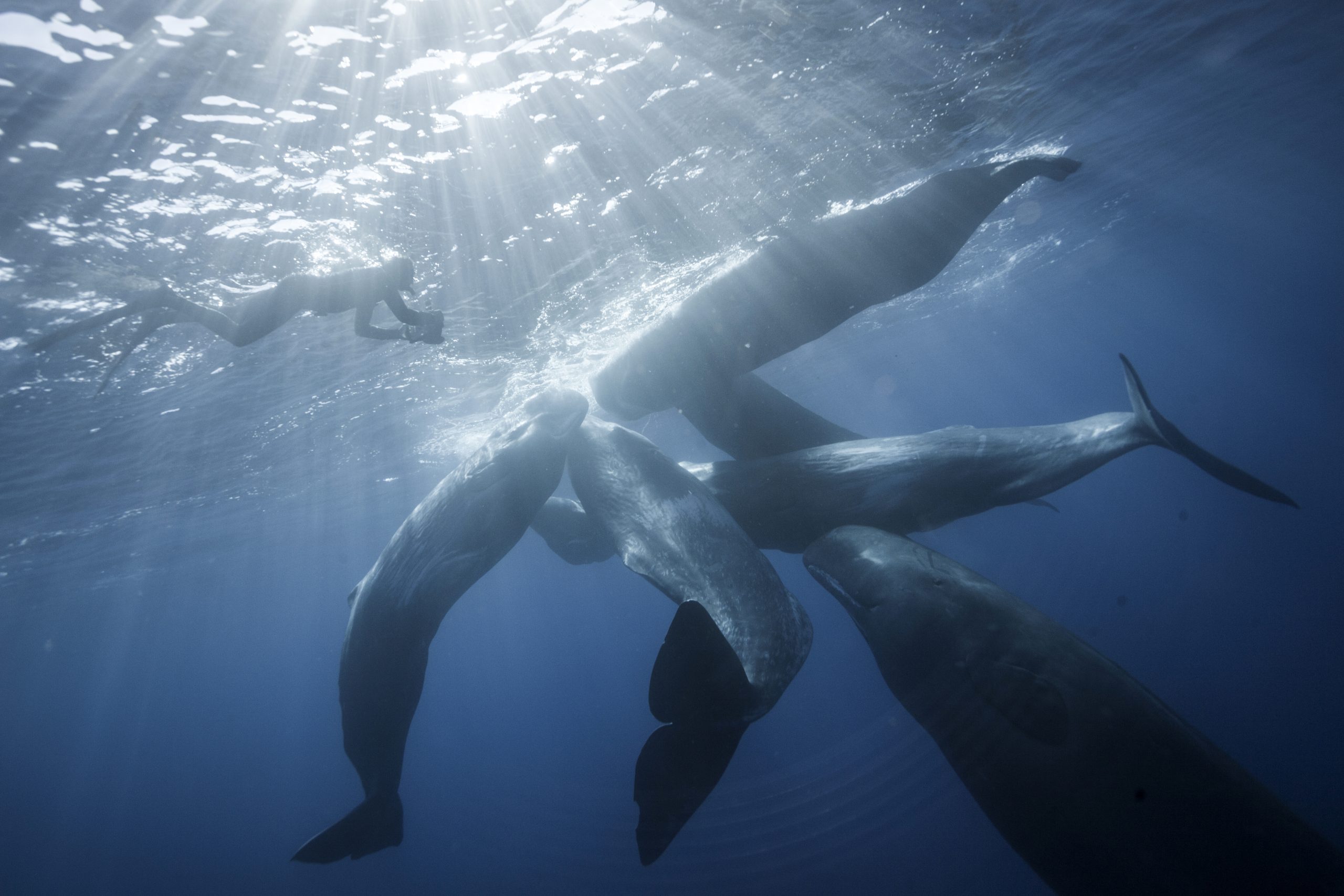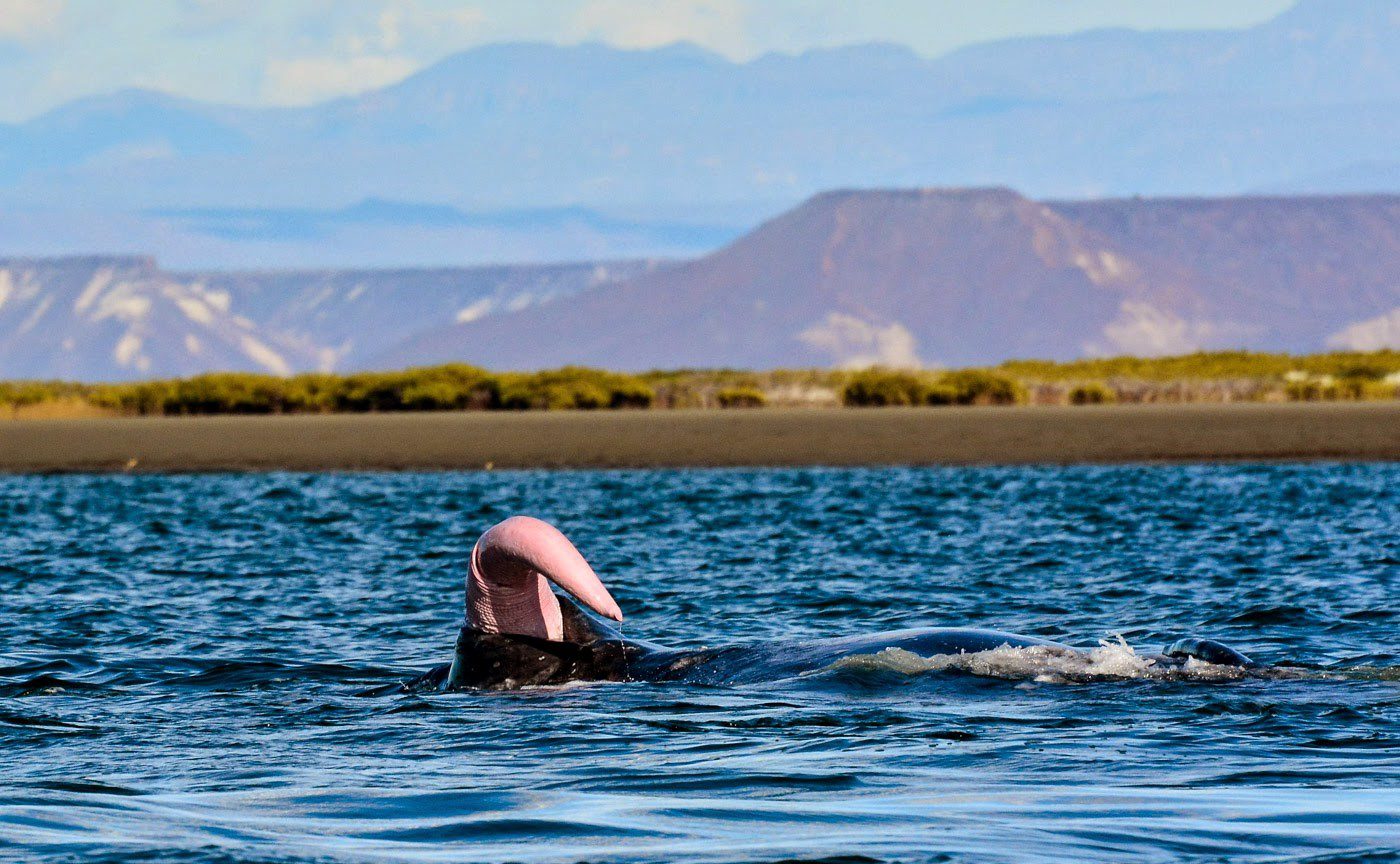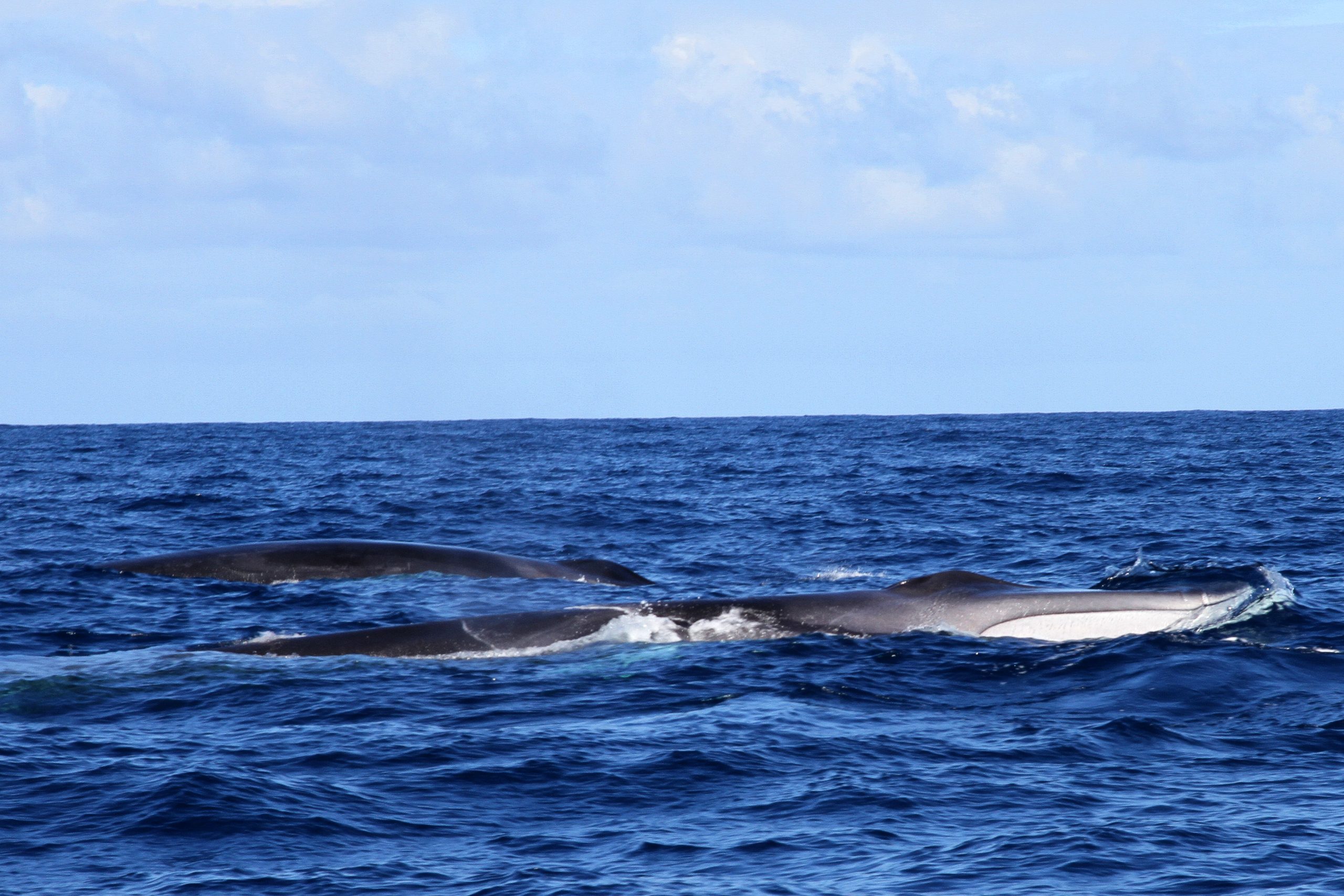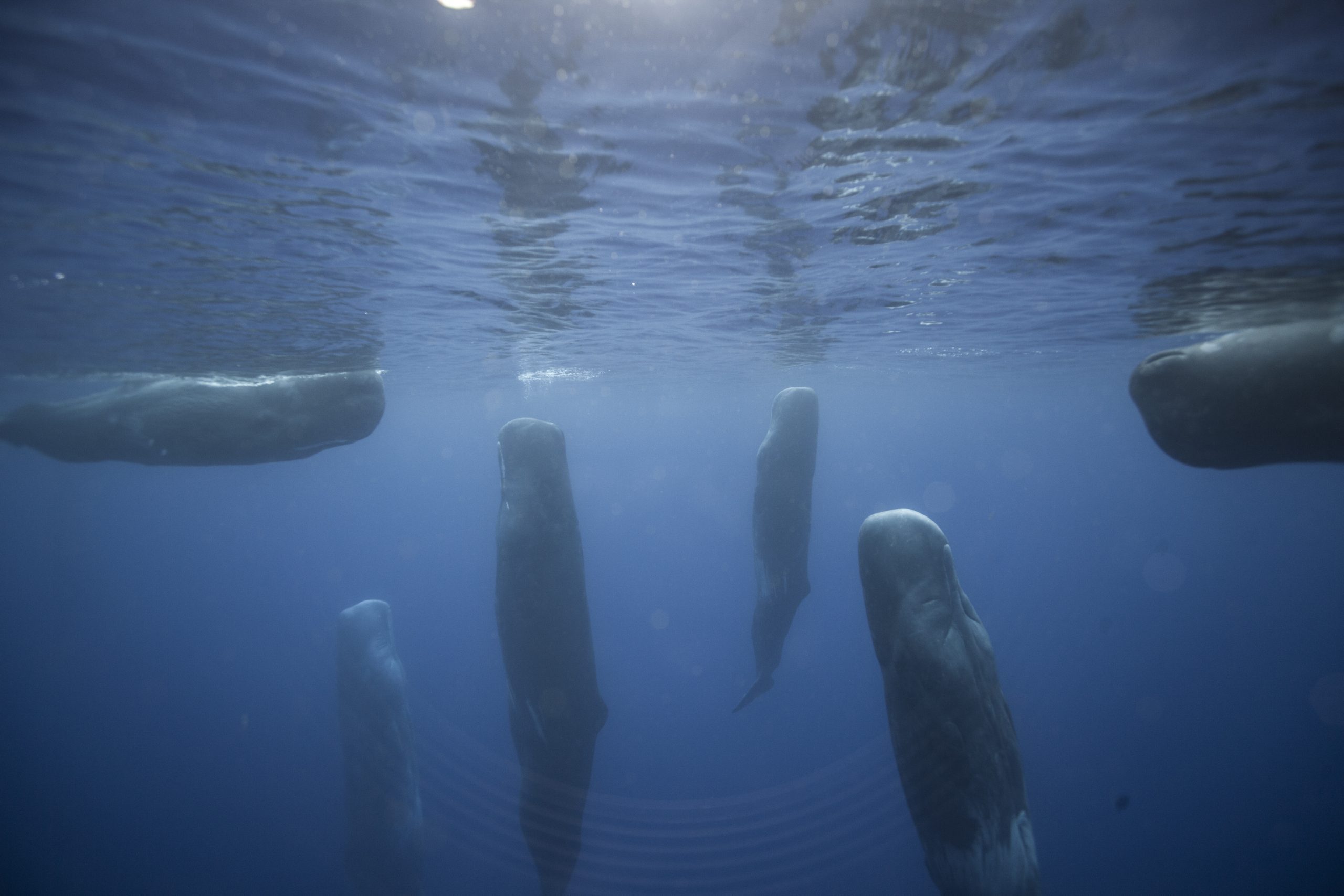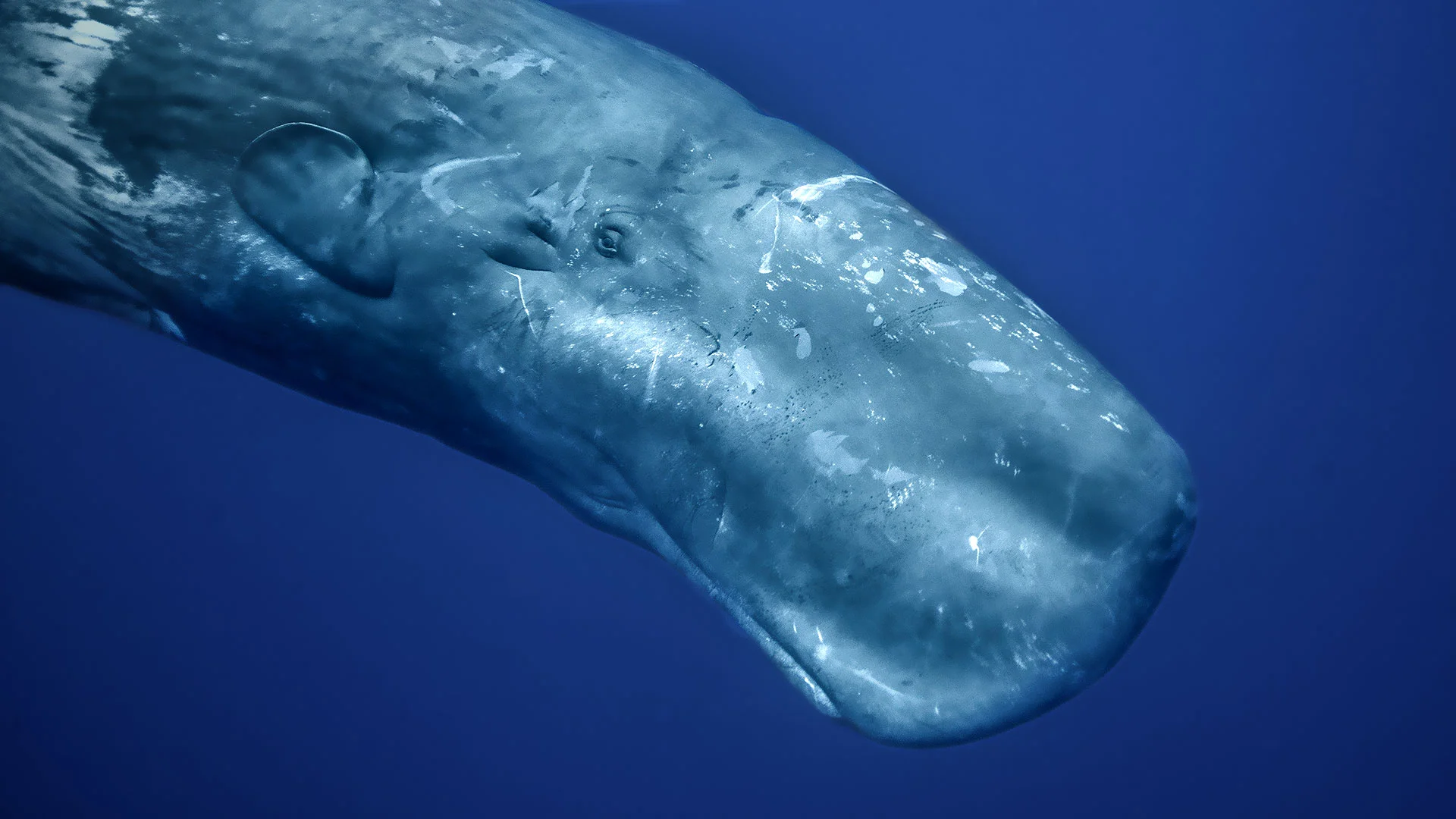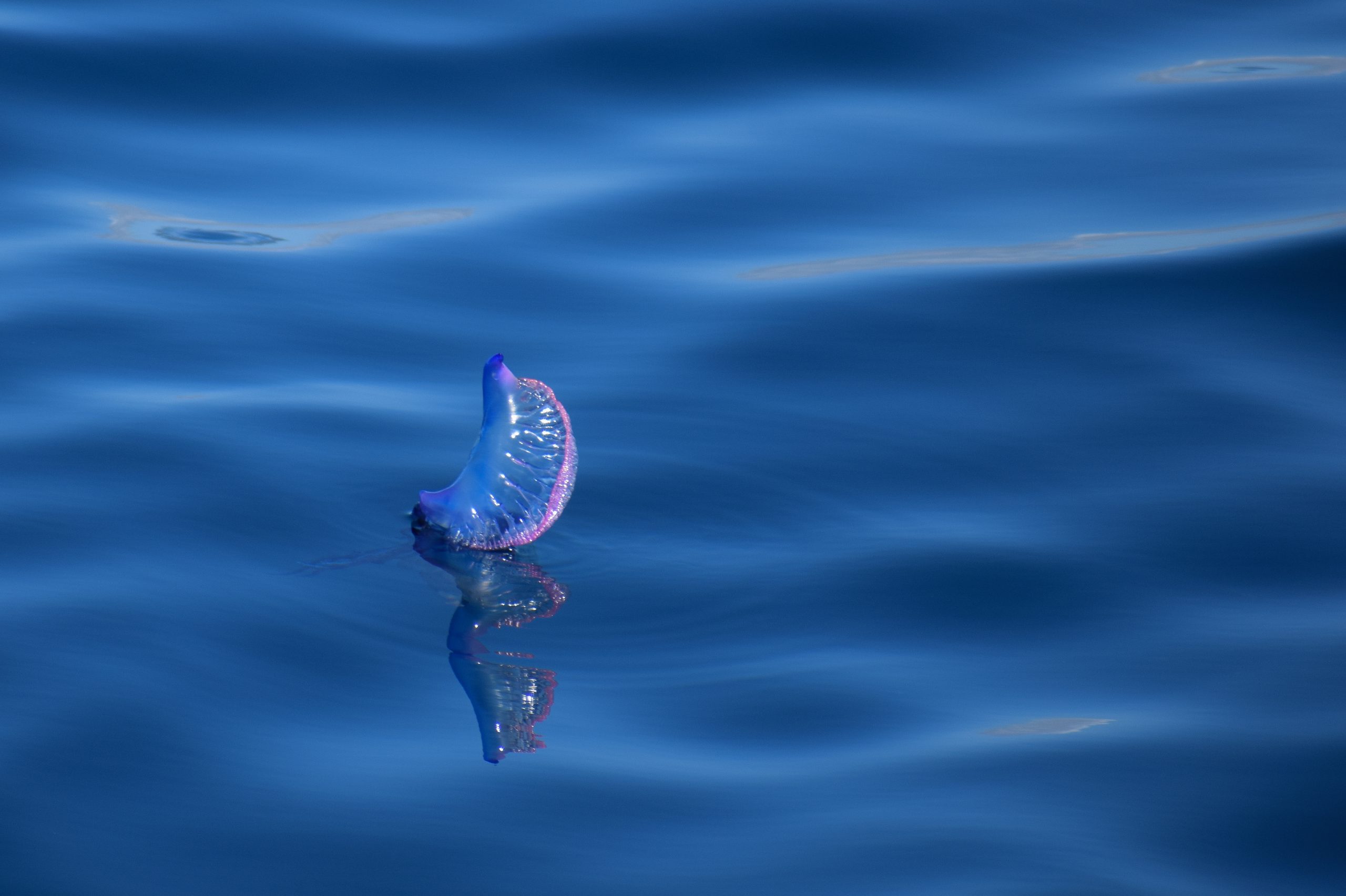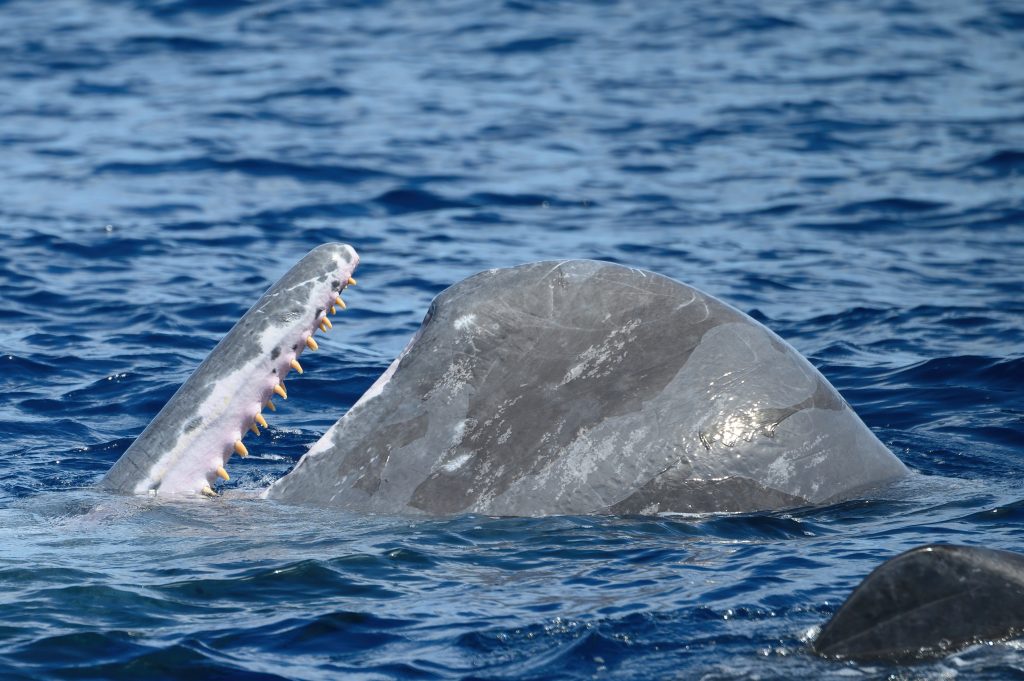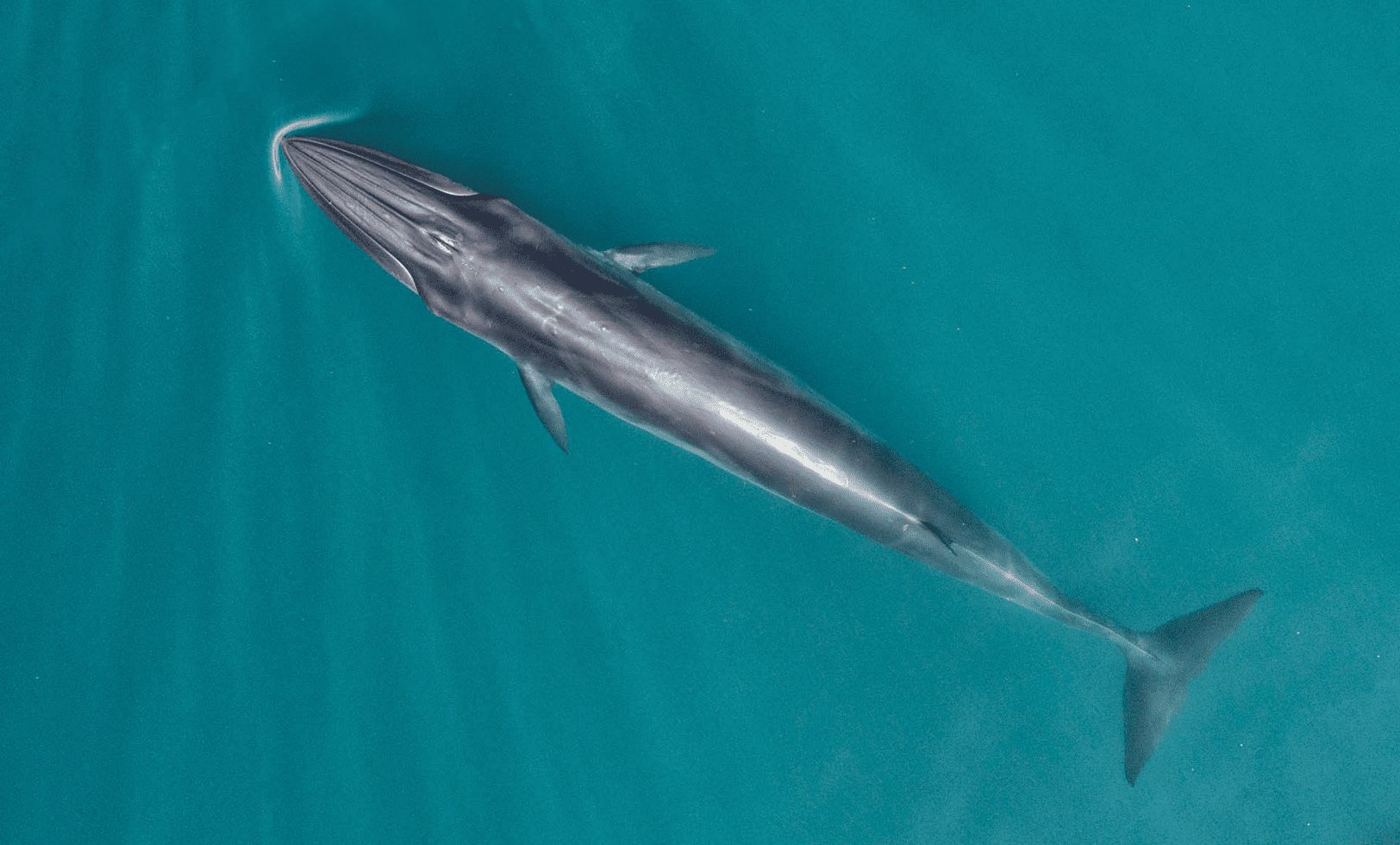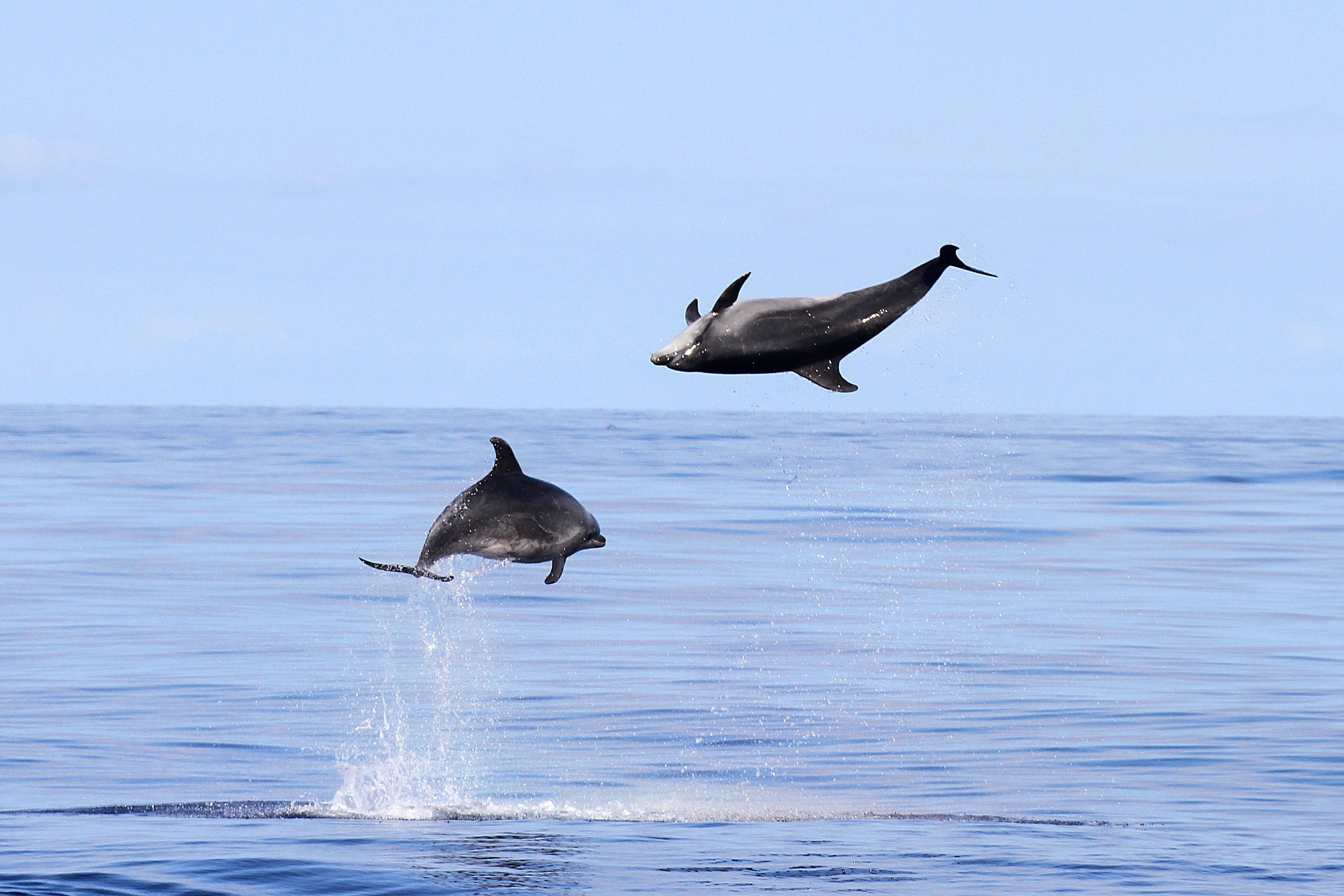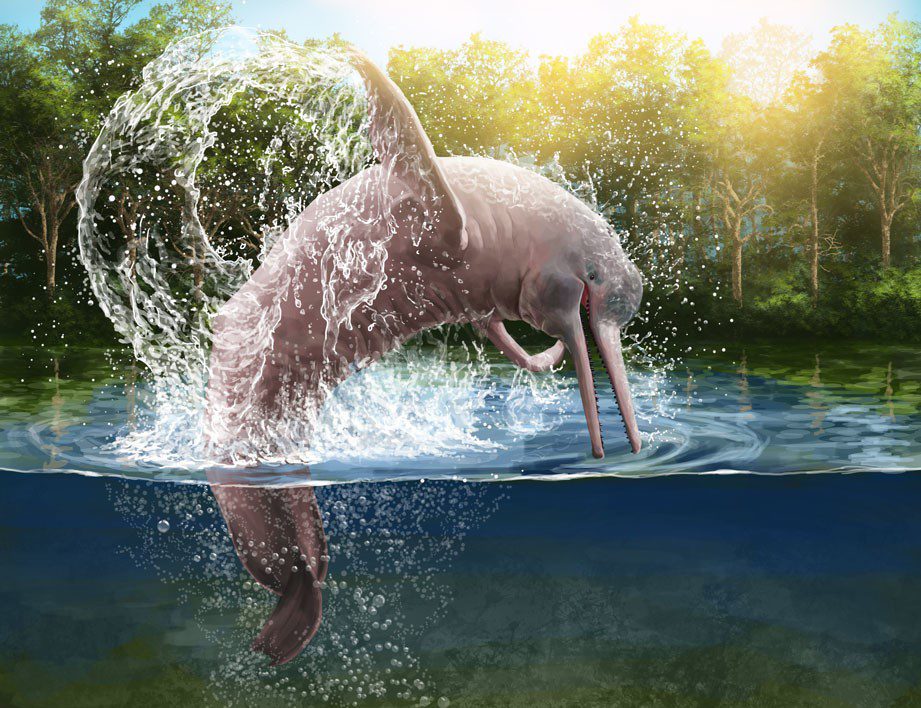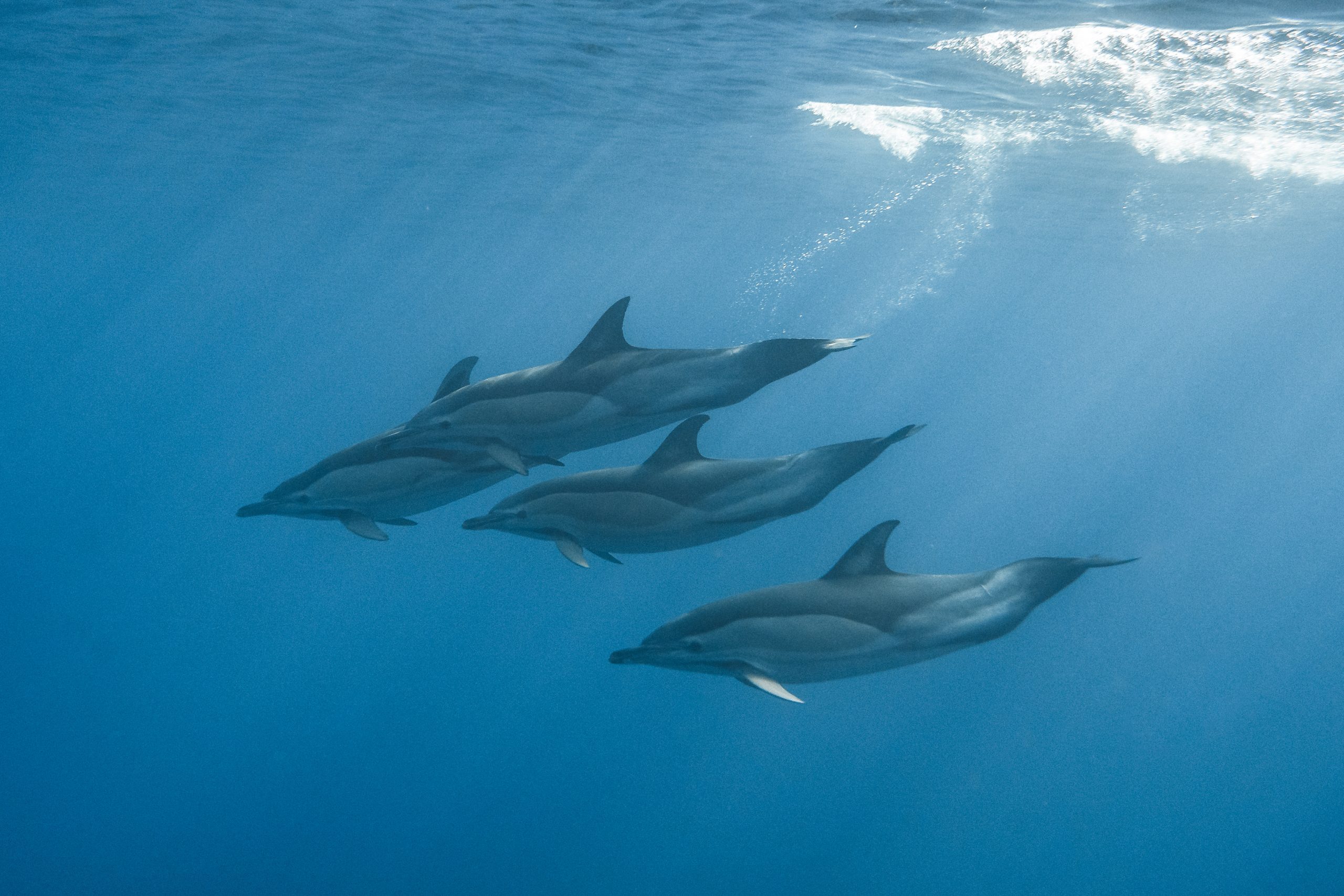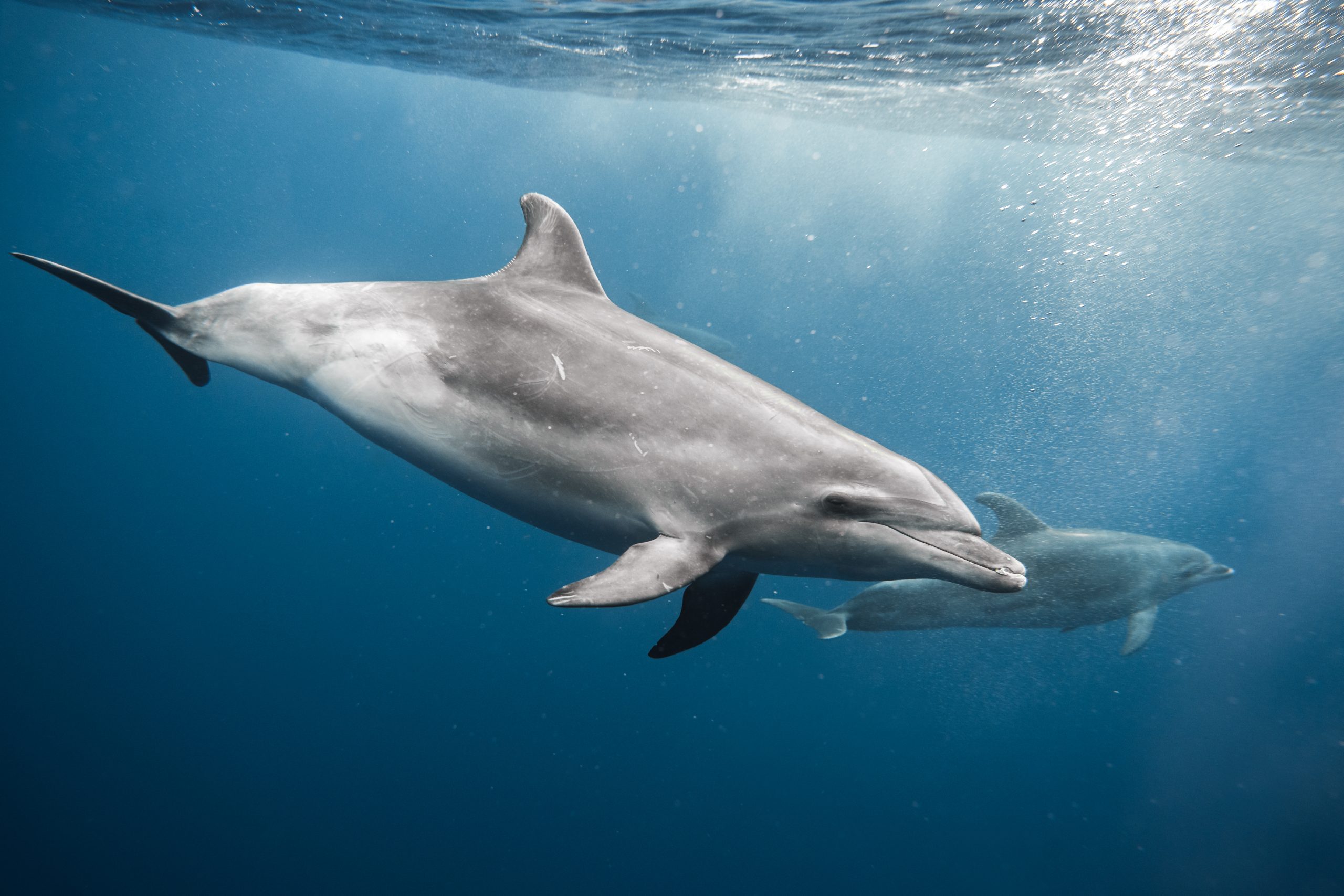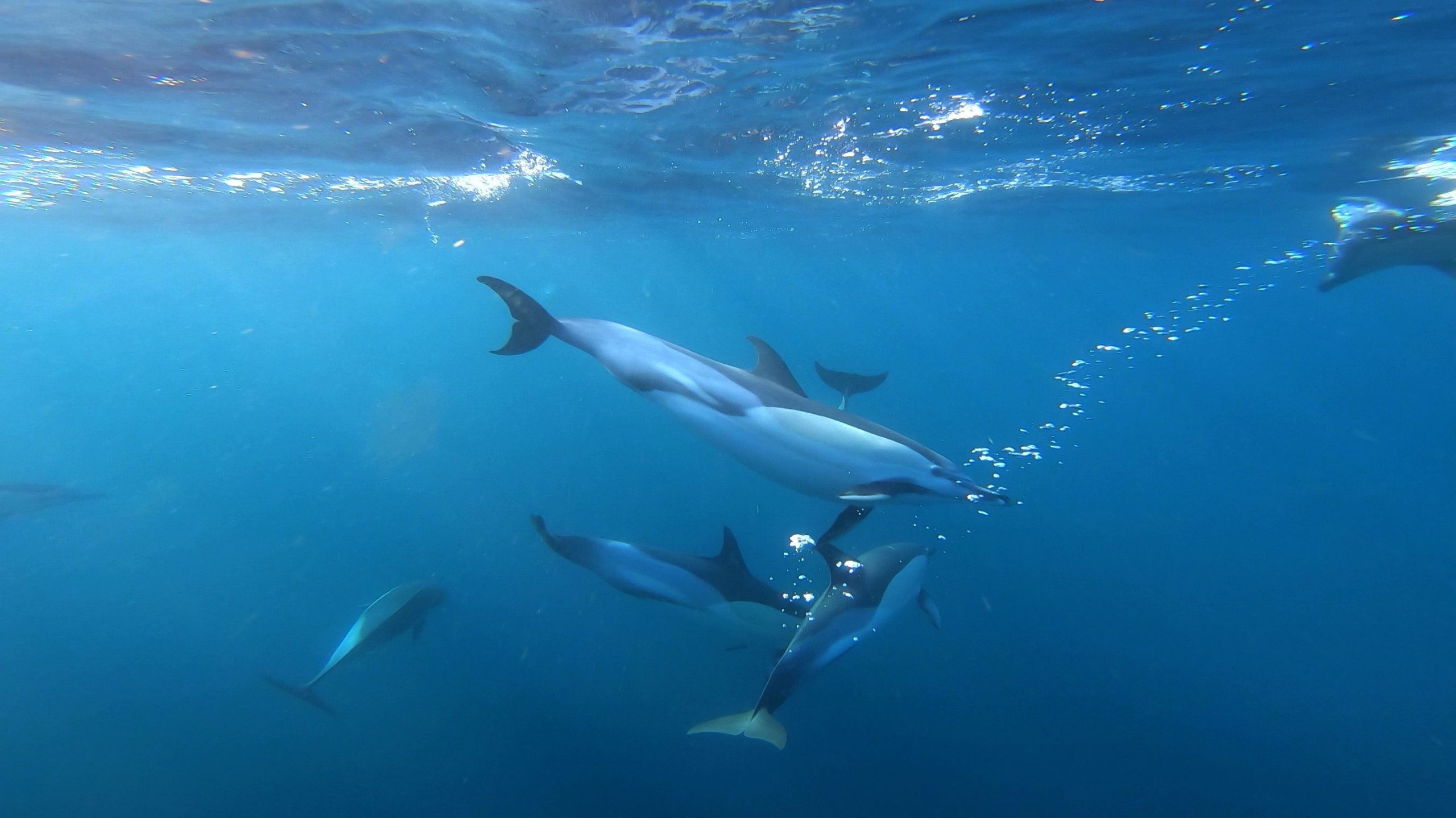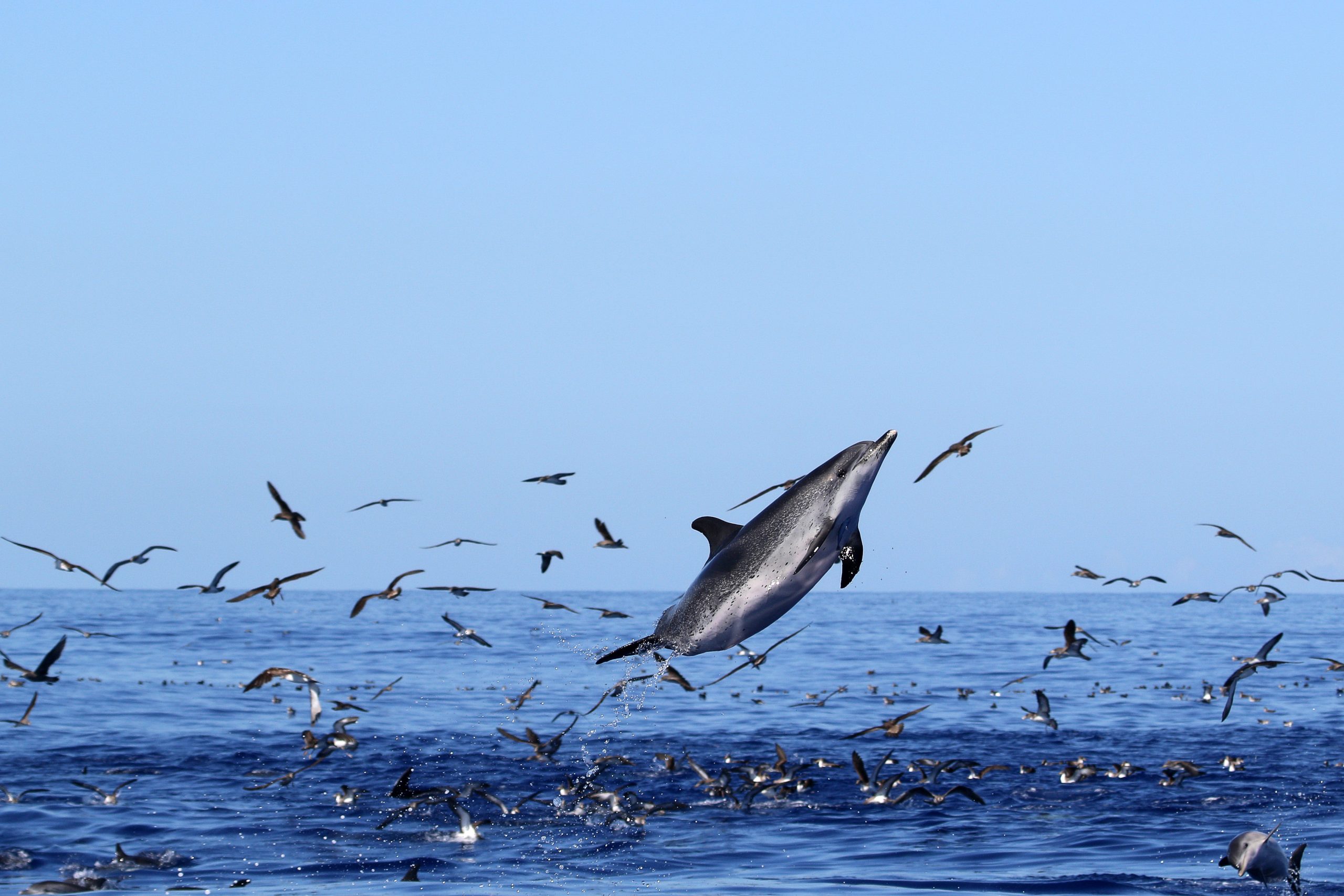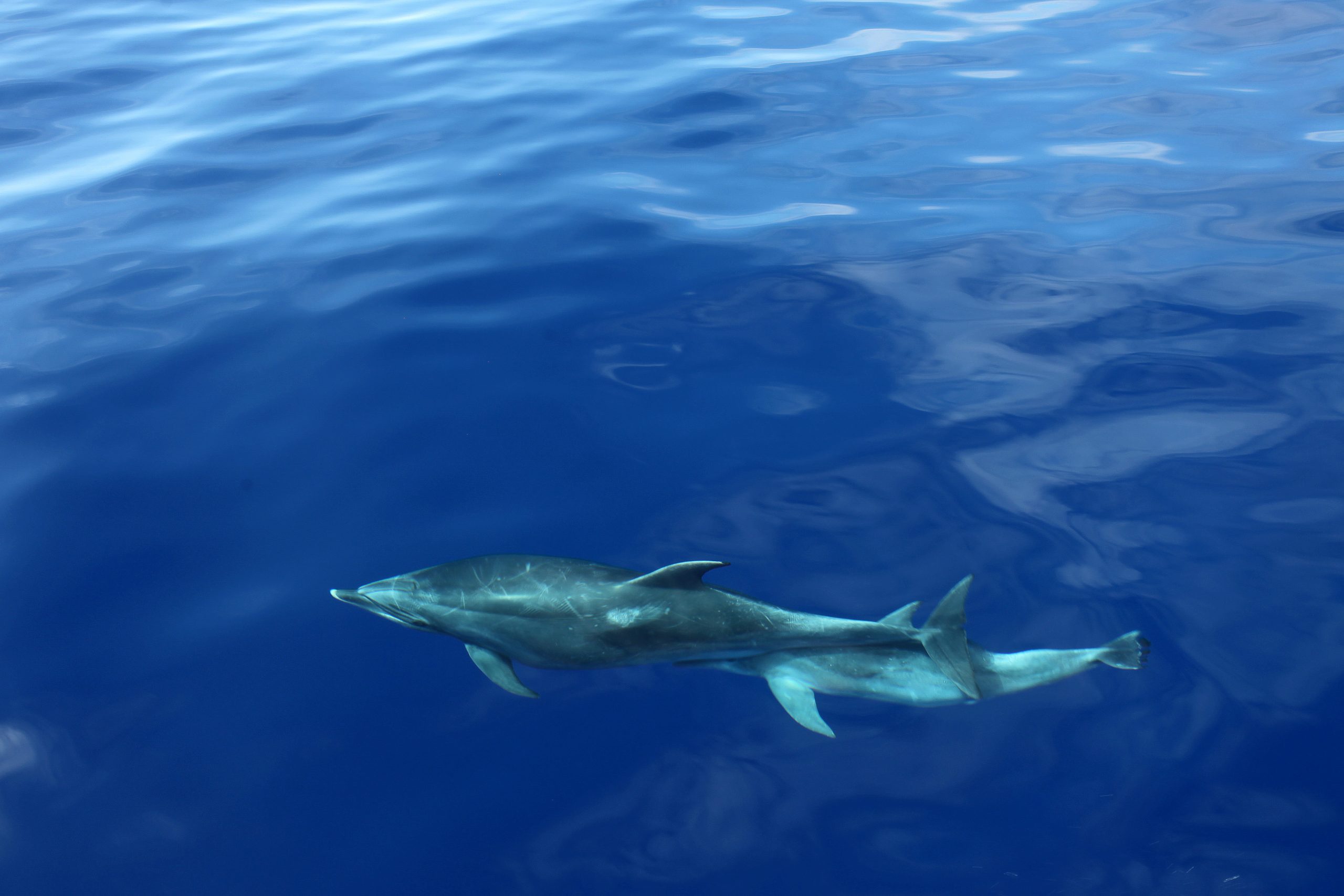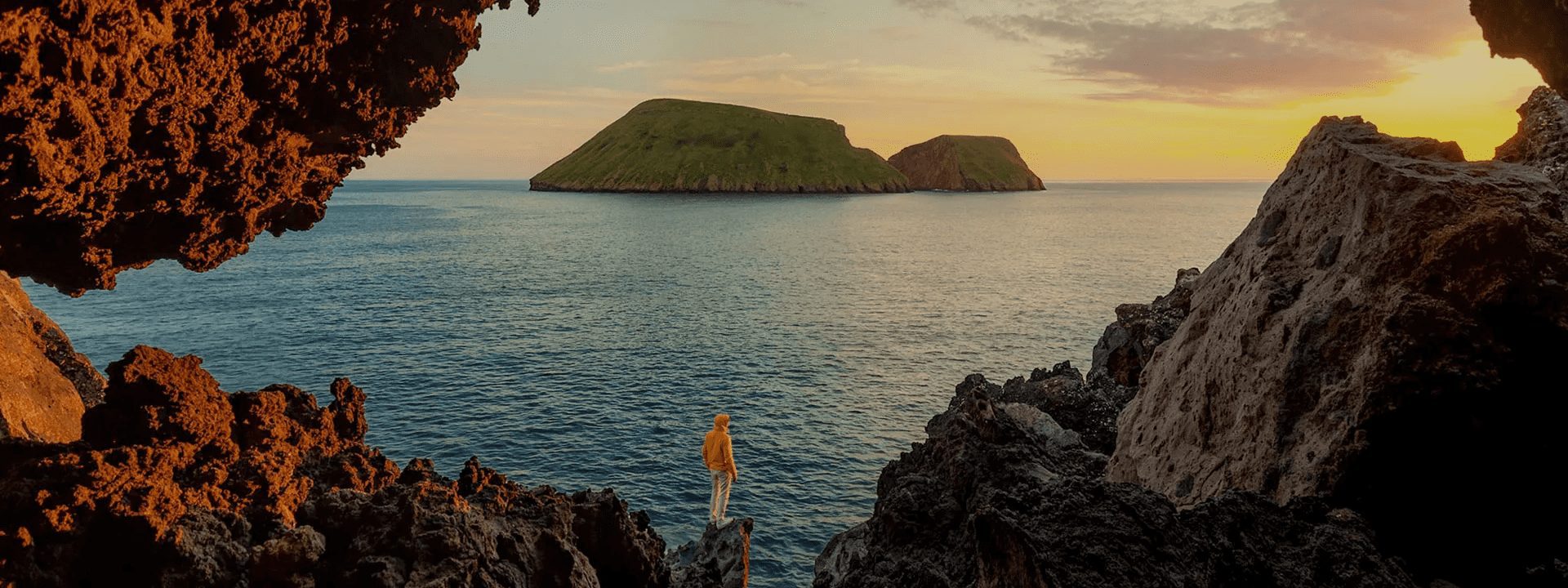One of the most frequently asked questions is: When is the best time for whale watching in the Azores? The answer depends on which species you would like to see. Whale watching is undoubtedly the most popular experience in the Azores, so you can’t miss it by any chance.
In this post, you will find all the most relevant information to help you plan your next vacation in the Azores so you can match the best season to see your preferred cetacean species.
Which Whales Can be Seen in the Azores?

Did you know that of the 81 total whale and dolphin species existing worldwide, in the Azores, you can see up to 28 of them?
And that is why we are the best European destination for watching cetaceans.
Our busy waters attract travelers from all over the world who hope to have the chance to see a whale jump, hundreds of dolphins accompanying the boats, or a beautiful whale tail saying goodbye before a deep dive.
In general, the best time to do whale watching in the Azores is during the Springtime, with April and May being our strongest months.
During this time, we have many fin whales, blue whales, and Sei Whales passing the Azores on their annual migration.
The biggest whales in the world will definitely impress you with their vast size. The blue whale is the largest of all animals, and the largest one discovered was approximately 33 meters long.
In addition to dozens of migratory species, we also have four resident species: Sperm whales, Risso’s dolphins, Bottlenose dolphins, and Common dolphins. Those are present around our islands all year long, and we usually can find them easily.
We occasionally also encounter minke whales and humpback whales, although they are not as common as the other three baleen whale species.
If you want to see our iconic whale species, the sperm whale, you could visit any time of the year, although during the summer months, you have a higher chance of seeing them.
Similarly, the summer is also the best time to see dolphins, as during this period we have more dolphin species in the area and the groups tend to be larger, with many calves present.
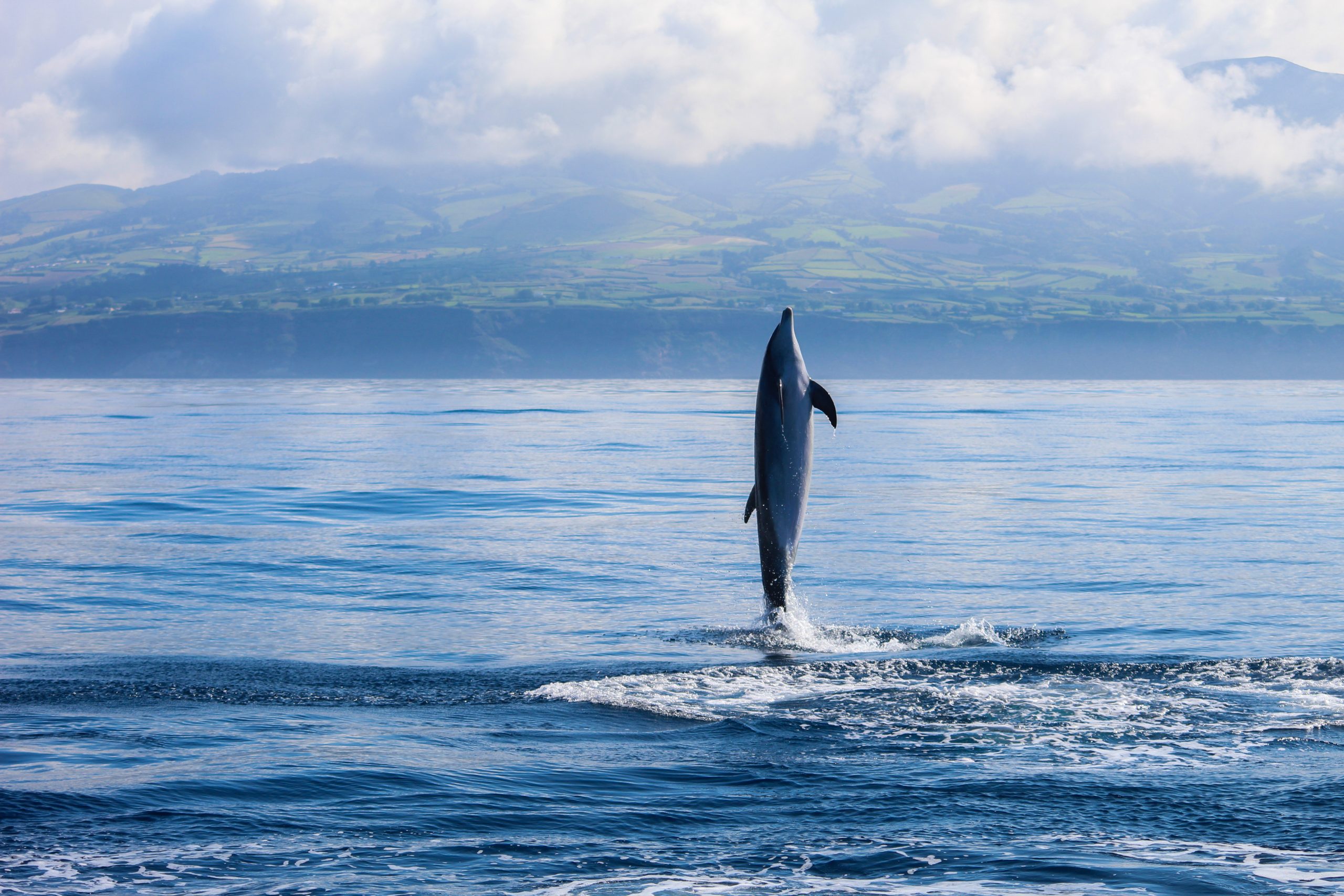
Best Time for Whale Watching in the Azores
We operate throughout the year, so if you prefer to avoid the busiest times and dislike the warm summer weather, you can always visit during the winter months.
As a starting point, you need to know that we have four resident species in the Azores and hence can be sighted throughout the year:

The following table serves as a guide to indicate approximately when our most commonly sighted species appear each year in the Azores.
Of course, there are variations from year to year. For example, the season of the baleen whales (mostly Fin whales, Blue whales, and Sei whales) can begin earlier or extend into the early summer months.
We can see at least 28 different species of whales and dolphins in the Azores. Occasionally, we have rarer encounters with other species, such as:
- Beaked Whales
- Orcas (also known as Killer Whales)
- False Killer Whales
📈 Check out all our whale watching sighting statistics!
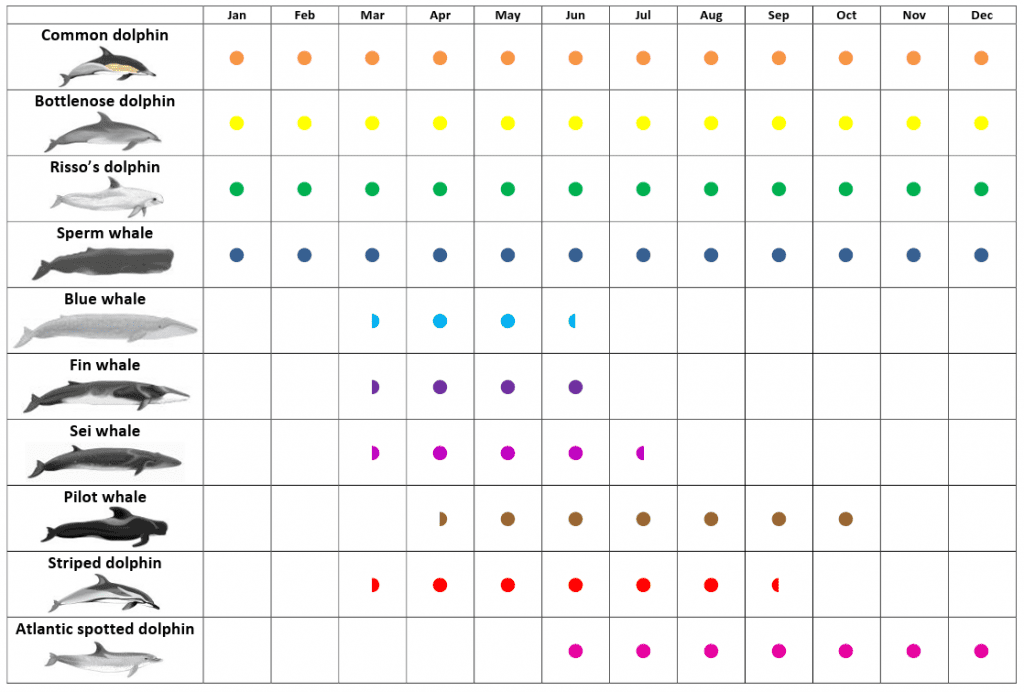
Whale Watching in Azores in April, May & June (Spring Season)

This is the best time for whale watching in the Azores if you want to see the giants of the ocean.
From March to June, this is when the biggest whales pass by the Azores on their migration route. They leave their winter habitat near the equator to migrate to the summer feeding grounds off the coasts of Greenland, Iceland, and Norway.
The baleen whales breed during the winter months in the tropical waters while they prepare their young ones for a long trip to the North Atlantic. When they pass by the Azores, they will stay several days to feed before continuing their long journey.
In the spring months, the sea is full of plankton and krill, the food for those whales. It is a paradise for them… And also for the travelers who are lucky enough to see them.

Did you know
The Blue Whales are not blue; they are more grayish.
For our marine biologists, this is an exciting time of the year, as the blue whales are the biggest in the animal kingdom.
However, those baleen whales passing by, that is to say, Blue Whales, Sei Whales, and Fin Whales, are not really the whales that will jump and show off so much, compared to, for example, the extraordinary Humpback Whale, and also the Sperm Whale that sometimes can jump and often shows its tail.
Additionally, due to global warming and various environmental disorders, it is now common to see these species outside their traditional springtime range.
For example, it is not rare to see Sei whales after the summer. The Azores are definitely a good place if you want to spot those big animals. In the springtime, you can also see Minke Whales and spectacular Humpback Whales.
Whale Watching in Azores in July, August & September (Summer Season)

In the summer, the water temperature begins to rise, allowing us to enjoy longer days and observe our wild animals.
In the summer, we receive visits from other migratory species that enjoy our warm waters, such as the Atlantic Spotted Dolphins, the Striped Dolphins, and the Pilot Whales.
It is during this time of year that we can see many baby dolphins swimming in huge groups. That is something so cute you don’t want to miss!
Our Sperm Whales keep on blessing us with their presence around the islands. It is the emblematic symbol of the Azores.

Hunted for a long time, now they are free and happy to roam off our coasts. Did you know that Sperm whales have teeth?
Unlike the baleen whales, which filter their food through long keratin plates inside their mouth.
On land, hydrangeas are blooming, decorating the countryside’s roads completely blue and purple. Something really beautiful to observe and take great pictures.
Whale Watching in Azores in October, November & December (Fall Season)
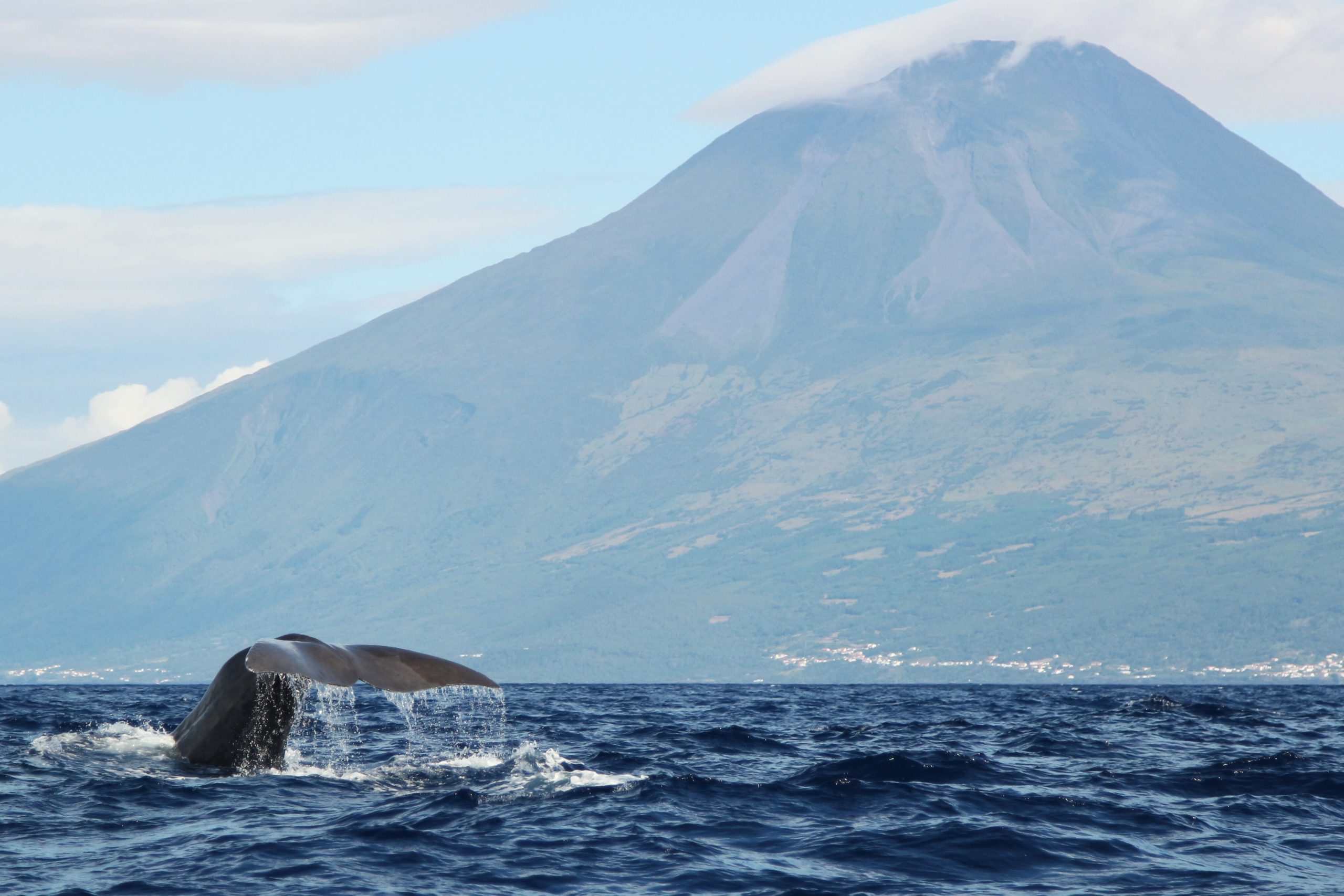
During the fall season, we will still have the company of the Atlantic Spotted Dolphins, who will continue to enjoy our warm waters until the temperature under the sea drops, at which point they will move out. The water is still perfect for a swim. Grab your snorkeling equipment and explore.
And there are still the four resident species around to see on a trip with us. Sperm whales are amazing to watch; you can almost be sure to see their huge tail when they go diving to hunt squids.
🐳 Related Tour: Whale Watching in Pico Island
This is a special moment where you can truly see the beauty of nature. You can recognize sperm whales from a distance thanks to their distinctive blow. Indeed, sperm whales have only one blowhole, in comparison to baleen whales, which have two.
So the blow of the sperm whale is always directed to one side. On the other hand, the straight vertical blow of the baleen whales.
On land, trees turn yellow and orange, adding a special touch to our bright green landscapes. Almost spooky! You can still enjoy the hikes in relatively good weather conditions.

Whale Watching in Azores in January, February & March (Winter Season)

We operate all year round in the Azores; we do not stop in the winter. Whale and dolphin watching in winter in the islands is more dependent on weather conditions. When the weather doesn’t let us go out to the sea, we reschedule the activity for another day. Your safety is our top priority.
Enjoy the resident sperm whales, Risso’s dolphins, Bottlenose dolphins, and Common dolphins that live here all year long.
There is a species that appears from time to time, the Killer whale, also called the Orca. They are amazing animals to watch; sometimes, they can be very active. On other occasions, we can also spot beaked whales and False killer whales.
If you enjoy quiet and are looking for peaceful holidays, consider winter as a time to explore hikes where you can be alone with nature. During this season, you can truly recharge your batteries and escape from the big cities and the confusion of modern life. Relax surrounded by magical landscapes.
Additionally, the temperature is consistently pleasant here. It can drop to a minimum of 15ºC, which is not too cold to enjoy outdoor adventures in the wild Azores.

Conclusion
The best time for whale watching in the Azores depends on what species you want to see. But we can guarantee that there will always be something to see.
And remember, at Futurismo, if you don’t see a single whale or dolphin, you can take another tour with us for free!
Now, let’s see what each season brings us under the sea.






